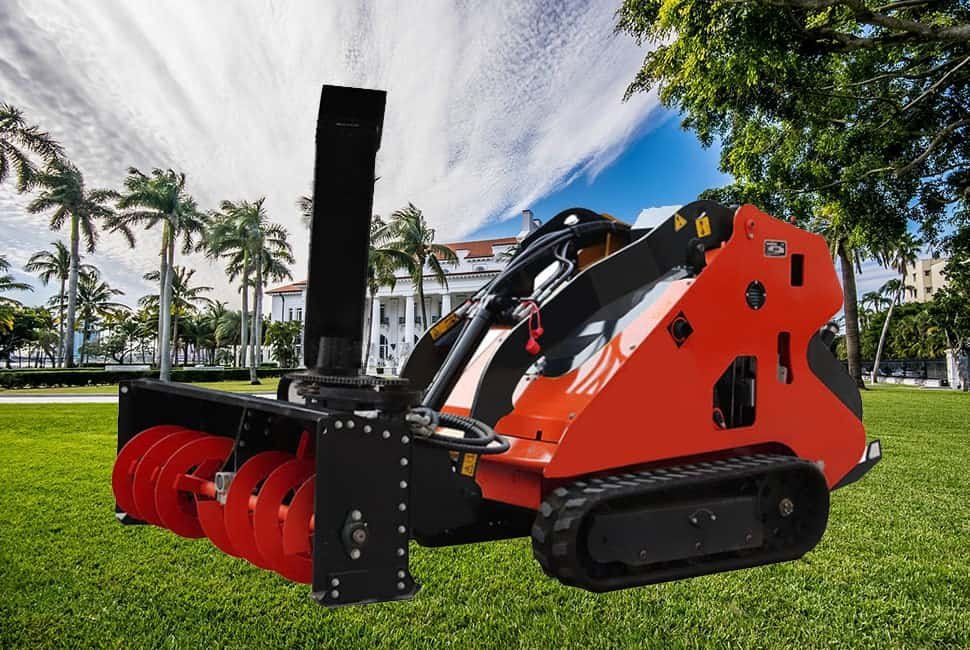The introduction of tractors revolutionized agriculture, addressing the pressing need for efficiency and productivity in farming. By mechanizing labor-intensive tasks, apparatus significantly transformed the landscape of agricultural development. You may wonder how this change unfolded and the profound effects it has had on farming practices. Let’s delve into this topic and explore the remarkable journey of tractors in agriculture.
They have drastically improved farming efficiency, allowing for faster cultivation, planting, and harvesting. They enable farmers to work in larger areas in less time, increasing overall productivity and supporting the growth of modern agriculture. This technological advancement has not only enhanced individual farm operations but has also reshaped entire agricultural economies.
Increased Efficiency in Farming Operations
When you think about the efficiency of farming operations, the role cannot be overstated. These machines have dramatically increased the efficiency of farming operations by mechanizing traditionally labor-intensive tasks.
With them, tasks like plowing, tilling, and harvesting can be completed much faster than with manual labor. This efficiency leads to higher yields and reduced labor costs, making farming more economically viable. You might find it interesting to consider how this transition has allowed farmers to allocate their resources more effectively.
Before it, farmers relied on animal power and manual labor, which limited their productivity. The shift to tractor usage has allowed farms to expand their operations, ultimately leading to greater food production to meet growing populations. This technological advancement laid the groundwork for modern agriculture, where efficiency and productivity are paramount.
Transformation of Farming Practices
As you explore the impact of it, you will notice that they have transformed various farming practices, enabling new methods of cultivation and crop management.
Tractors facilitate precision farming techniques, such as contour plowing and crop rotation, which enhance soil health and optimize yields. This transformation has led to more sustainable agricultural practices, allowing you to improve your farming outcomes.
The ability to use various attachments , like seeders and cultivators, has diversified farming methods. Farmers can adapt to different soil types and conditions, leading to improved crop management. Additionally, apparatus has made it easier for you to implement modern technologies like GPS and data analytics, further enhancing agricultural efficiency.

Economic Impact on Agriculture
When considering the broader implications of tractor usage, the economic impact on agriculture has been profound. The introduction of apparatus has reshaped the agricultural landscape and farmer livelihoods.
Tractors have reduced reliance on labor, lowering costs and enabling farmers to focus on higher-value crops. This shift has contributed to increased profits and investment in technology and infrastructure, providing you with opportunities to grow your business.
The economic benefits of tractor usage extend beyond individual farms. As productivity rises, the agricultural sector as a whole thrives, supporting rural economies and contributing to national food security. The resulting surplus has also led to the expansion of markets and increased exports, benefiting local and global economies. By understanding these dynamics, you can better appreciate the vital role apparatus plays in modern agriculture.
The Components of one
Understanding the structure of a tractor is essential to grasping its capabilities and performance. Each component plays a vital role in ensuring optimal operation.
The engine, typically a diesel engine, is the heart of the one, determining power, torque, and displacement. For instance, the “Dongfanghong tractor engine model” is known for its efficiency and reliability, showcasing how engine specifications directly affect performance.
The chassis houses crucial systems including the transmission system, which consists of gear settings and ratios. The traction system, whether tracks or tires, is pivotal for maneuverability, impacting aspects like “tractor tire size” and the operational principles of “tracked tractors.” Moreover, the steering and braking systems ensure control and safety during operations. Understanding these components allows you to make informed decisions when selecting and maintaining apparatus.
Performance Parameters
To evaluate a tractor’s capabilities, several performance parameters must be considered, including power, torque, speed, and fuel efficiency.
Power, such as the “rated power of apparatus,” is a key indicator of a tractor’s work capacity. Torque relates directly to the tractor’s pulling and driving capabilities, with metrics like “maximum torque speed” being crucial for effective farming operations.
Speed is another important factor, encompassing both forward and reverse speeds, which can be referenced by terms like “maximum travel speed of tractors” and “adjustable speed tractors.” Fuel economy, demonstrated by metrics like “fuel consumption per 100 kilometers” or “energy-efficient tractors,” also plays a vital role in reducing operational costs and increasing profitability.
Types of Agricultural Operations
Machines are versatile machines used in various agricultural operations, adapting to the specific needs of farmers.
For soil preparation, you might encounter terms like “tractor plowing depth,” “rotary tiller tractor,” and “plow tractors,” highlighting their role in tilling the soil for planting. Additionally, tractors equipped with seeders are essential for efficient sowing, as seen with “tractor seeder compatibility” and “precision seeding it.”
It can also be used for transportation, with some models designed for short-distance transport of goods, making them ideal for local supply chains. While apparatus are not typically the primary equipment for harvesting, they can pull harvesters, with keywords like “tractor-pulled harvesting operations” demonstrating their support role in this critical phase of farming.
Brands and Models
The machine’s market features numerous brands and models, each designed to meet specific farming needs.
Brands such as “John Deere One,” “Kubota One,” “Dongfanghong One,” and “Lovol One” are well-known for their reliability and innovation. Each brand offers a range of models tailored for different applications, such as “John Deere 5E series one” or “Dongfanghong LX2004 one,” providing you with options to suit your specific operational requirements.
By familiarizing yourself with the various brands and their model specifications, you can better identify the best one for your needs. Whether you prioritize power, efficiency, or specialized features, understanding the offerings of different manufacturers will empower you in your purchasing decisions.
الصيانة والرعاية
To maximize the lifespan and performance of your machine, regular maintenance and care are crucial.
Regular oil changes, including knowledge of “tractor oil types” and the frequency of changes, are essential for maintaining engine health. Additionally, keeping air and fuel filters clean, as well as knowing when to replace them, ensures optimal operation.
Regular inspections of key components such as the crankshaft and transmission system are also necessary to prevent costly repairs. Understanding daily maintenance checks, especially during winter, can help you avoid issues and extend the life of your apparatus. By implementing a proactive maintenance routine, you can ensure that your tractor remains a reliable asset on your farm.
Historical Development
The evolution of the tractor is a fascinating journey that reflects broader technological advancements in agriculture.
The invention of the tractor dates back to the late 19th century, with key developments marking significant milestones in agricultural technology. Understanding this history helps you appreciate the innovations that have shaped modern tractors.
Early apparatus were often steam-powered, evolving into the diesel engines we see today. The transition from rudimentary machines to sophisticated modern tractors showcases the continuous drive for efficiency and productivity in agriculture.
Safety Considerations
As with any machinery, safety is paramount when operating tractors. Familiarizing yourself with safety guidelines can prevent accidents and injuries.
You should always adhere to “apparatus safety operation regulations” and be especially cautious during night operations. Awareness of potential hazards and taking preventative measures ensures a safer working environment.
Implementing safety training for all operators can further mitigate risks, ensuring that everyone understands proper procedures and emergency protocols. By prioritizing safety, you can protect both your workers and your investment in agricultural equipment.
Policies and Subsidies
Government policies and subsidies can significantly impact your decision to purchase a tractor, providing financial assistance that can ease the burden of initial investments.
You might want to explore “apparatus subsidy standards in agricultural machinery purchases” and “purchase incentives for tractors” to understand how these programs can benefit you.
Staying informed about available subsidies can lead to substantial savings and encourage you to invest in high-quality equipment. Leveraging these opportunities can enhance your operational capacity and support your growth in the agricultural sector.

ملخص
In conclusion, tractors have fundamentally changed agricultural development by enhancing efficiency, transforming farming practices, and positively impacting the economy. Their introduction revolutionized the way farmers approach cultivation, allowing for faster and more precise planting, tilling, and harvesting.
As their mechanical components have evolved, tractors now incorporate advanced technologies, such as GPS and automation, further improving productivity and resource management. Additionally, their versatility enables farmers to engage in various operations, from plowing and seeding to transporting goods. Moreover, the rich history of tractors highlights the ongoing innovation in the agricultural sector. Safety considerations are paramount, with modern apparatus designed to protect operators while enhancing performance.
Government policies and subsidies play a crucial role in making these vital machines accessible, ensuring that even small-scale farmers can benefit from their use. Embracing the power of tractors can lead to improved productivity, sustainability, and economic viability in your farming operations, ultimately contributing to the overall growth of the agricultural industry.


